Fatih Kilinc
Hybrid Reconfigurable Intelligent Surface Enabled Over the Air Index Modulation
Jul 12, 2024Abstract:Users' desire for enhanced performance drive the inevitable technological progress on vertical applications in wireless communication systems. To meet these demands, researchers vigorously investigate potential 6G and beyond technologies and solutions. Reconfigurable intelligent surfaces (RISs) have risen in popularity and attracted the attention of academia as well as industry and seem to be a promising candidate for 6G technology. RISs are reflective metamaterials with many configurable elements consisting of pin diodes that have the ability to manipulate the impinging signals' properties, hence, enabling some sort of virtual control over the wireless channel. In this paper, we propose a novel over-the-air index modulation (IM) scheme through the use of a hybrid RIS with active and passive partitions to convey additional IM bits over-the-air. In addition we propose another modified scheme that allows the transmission for even more IM bits but at the expense of certain trade-offs. First, we present the system model for both of the proposed schemes. Furthermore, comprehensive computer simulation results are provided and discussed presenting the superior bit error rate (BER) performance and additional benefits of the proposed systems compared to similar benchmarks.
Network-Independent and User-Controlled RIS: An Experimental Perspective
Aug 15, 2023Abstract:The march towards 6G is accelerating and future wireless network architectures require enhanced performance along with significant coverage especially, to combat impairments on account of the wireless channel. Reconfigurable intelligent surface (RIS) technology is a promising solution, that has recently been considered as a research topic in standards, to help manipulate the channel in favor of users needs. Generally, in experimental RIS systems, the RIS is either connected to the transmitter (Tx) or receiver (Rx) through a physical backhaul link and it is controlled by the network and requires significant computation at the RIS for codebook (CB) designs. In this paper, we propose a practical user-controlled RIS system that is isolated from the network to enhance communication performance and provide coverage to the user based on its location and preference. Furthermore, a low-complexity algorithm is proposed to aid in CB selection for the user, which is performed through the wireless cloud to enable a passive and energy efficient RIS. Extensive experimental test-bed measurements demonstrate the enhanced performance of the proposed system while both results match and validate each other.
Reconfigurable Intelligent Surface Enabled Over-the-Air Uplink Non-orthogonal Multiple Access
Aug 06, 2022Abstract:Innovative reconfigurable intelligent surface (RIS) technologies are rising and recognized as promising candidates to enhance 6G and beyond wireless communication systems. RISs acquire the ability to manipulate electromagnetic signals, thus, offering a degree of control over the wireless channel and the potential for many more benefits. Furthermore, active RIS designs have recently been introduced to combat the critical double fading problem and other impairments passive RIS designs may possess. In this paper, the potential and flexibility of active RIS technology are exploited for uplink systems to achieve virtual non-orthogonal multiple access (NOMA) through power disparity over-the-air rather than controlling transmit powers at the user side. Specifically, users with identical transmit power, path loss, and distance can communicate with a base station sharing time and frequency resources in a NOMA fashion with the aid of the proposed hybrid RIS system. Here, the RIS is partitioned into active and passive parts and the distinctive partitions serve different users aligning their phases accordingly while introducing a power difference to the users' signals to enable NOMA. First, the end-to-end system model is presented considering two users. Furthermore, outage probability calculations and theoretical error probability analysis are discussed and reinforced with computer simulation results.
RIS-Assisted Grant-Free NOMA
Jul 23, 2022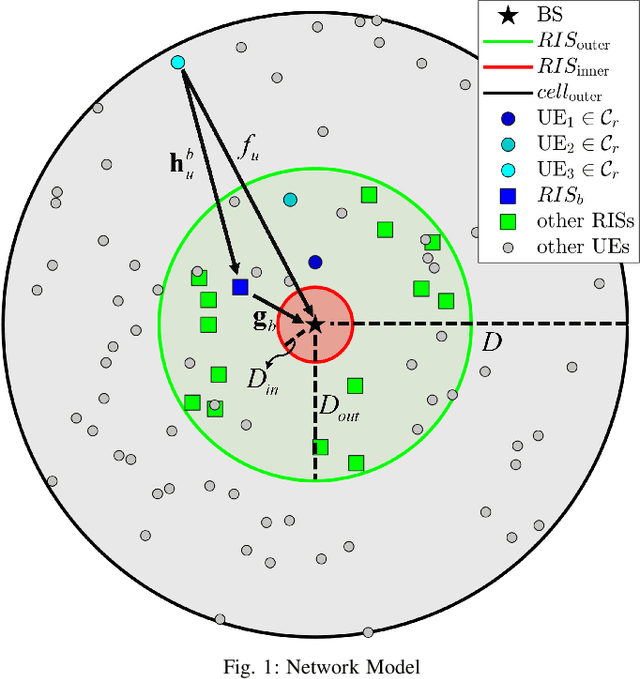
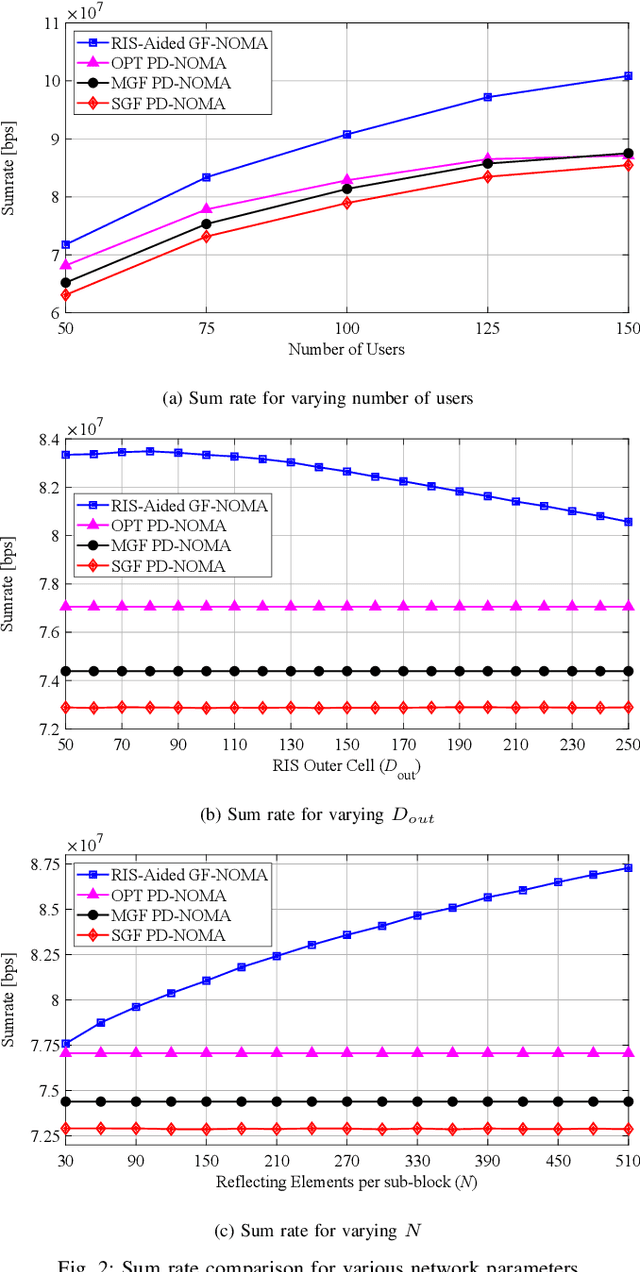
Abstract:This paper introduces a reconfigurable intelligent surface (RIS)-assisted grant-free non-orthogonal multiple-access (GF-NOMA) scheme. To ensure the power reception disparity required by the power domain NOMA (PD-NOMA), we propose a joint user clustering and RIS assignment/alignment approach that maximizes the network sum rate by judiciously pairing user equipments (UEs) with distinct channel gains, assigning RISs to proper clusters, and aligning RIS phase shifts to the cluster members yielding the highest cluster sum rate. Once UEs are acknowledged with the cluster index, they are allowed to access their resource blocks (RBs) at any time requiring neither further grant acquisitions from the base station (BS) nor power control as all UEs are requested to transmit at the same power. In this way, the proposed approach performs an implicit over-the-air power control with minimal control signaling between BS and UEs, which has shown to deliver up to 20% higher network sum rate than benchmark GF-NOMA and optimal grant-based PD-NOMA schemes depending on the network parameters. The given numerical results also investigate the impact of UE density, RIS deployment, and RIS hardware specifications on the overall performance of the proposed RIS-aided GF-NOMA scheme.
An Amplifying RIS Architecture with a Single Power Amplifier: Energy Efficiency and Error Performance Analysis
Nov 18, 2021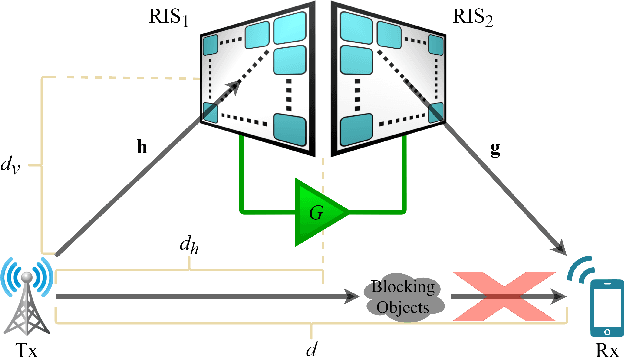
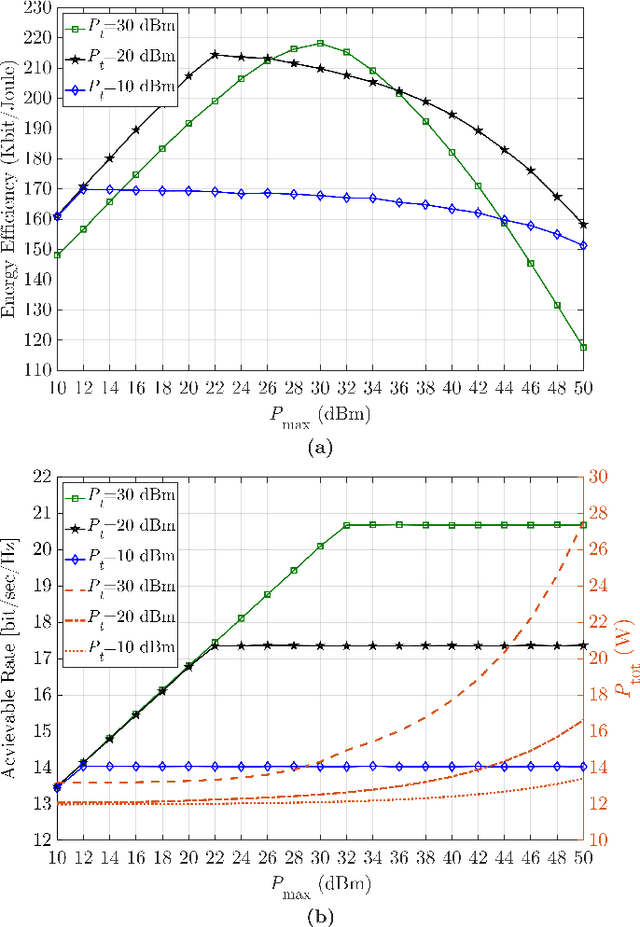
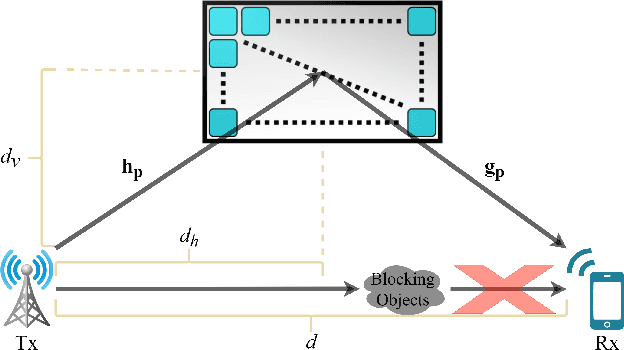
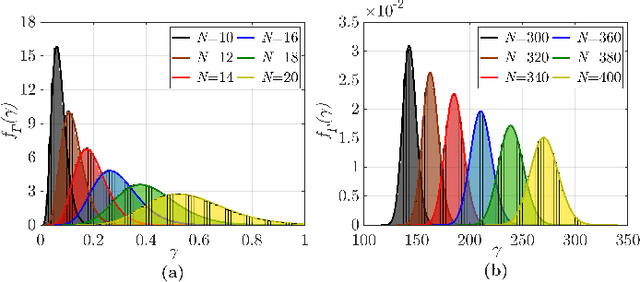
Abstract:Reconfigurable intelligent surfaces (RISs) have recently attracted the attention of the community as a potential candidate for next generation of wireless communication networks. Various studies have been carried out on this technology, which allows the control of the signal propagation environment. However, when an RIS is used in its inherently passive structure, it appears to be only a supportive technology for communications, while suffering from a multiplicative path loss. Therefore, researchers have lately begun to focus on RIS hardware designs with minimal active elements to further boost the benefits of this technology. In this paper, we present a simple hardware architecture for RISs including a single variable gain amplifier for reflection amplification to confront the multiplicative path loss. The end-to-end signal model for communication systems assisted with the proposed amplifying RIS design is presented, together with an analysis for the capacity maximization and the theoretical bit error probability performance, which is verified by computer simulations. In addition, the advantages of the proposed amplifying RIS design compared to its passive counterpart are discussed. It is shown that the proposed RIS-based system significantly eliminates the double fading problem appearing in conventional passive RIS-assisted systems as well as improves the energy efficiency.
Physical Channel Modeling for RIS-Empowered Wireless Networks in Sub-6 GHz Bands
Nov 02, 2021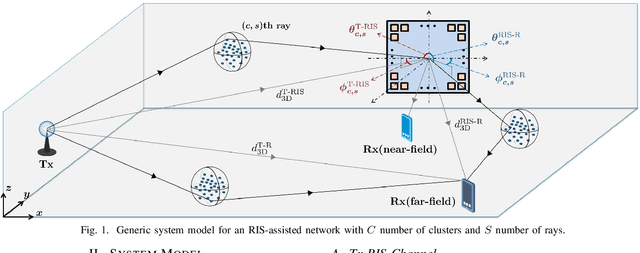
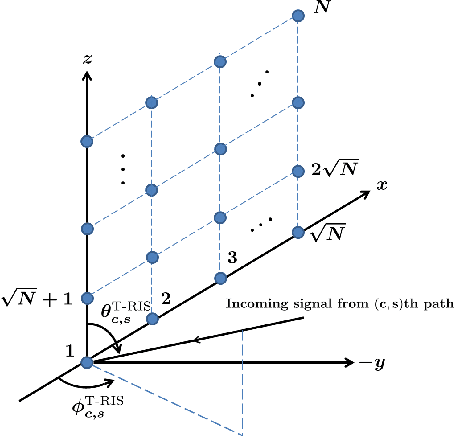
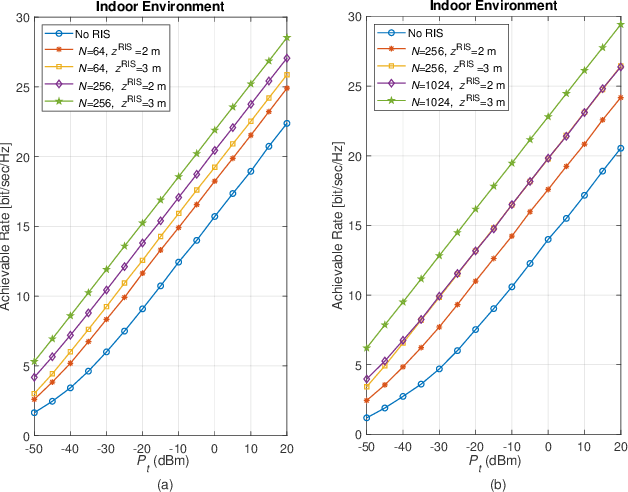
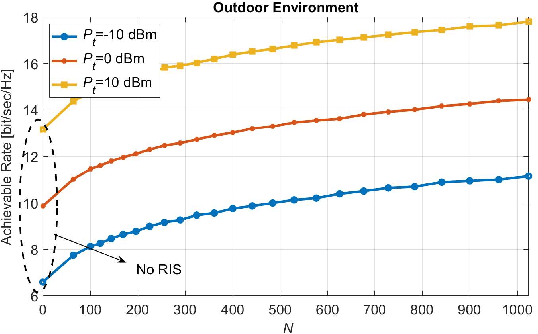
Abstract:Reconfigurable intelligent surface (RIS)-assisted communications is one of the promising candidates for next generation wireless networks by controlling the propagation environment dynamically. In this study, a channel modeling strategy for RIS-assisted wireless networks is introduced in sub-6 GHz bands by considering both far-field and near-field behaviours in transmission. We also proposed an open-source physical channel simulator for sub-6 GHz bands where operating frequency, propagation environment, terminal locations, RIS location and size can be adjusted. It is demonstrated via extensive computer simulations that an improved achievable rate performance is obtained in the presence of RISs for both near-field and far-field conditions.
Over-the-Air Equalization with Reconfigurable Intelligent Surfaces
Jun 29, 2021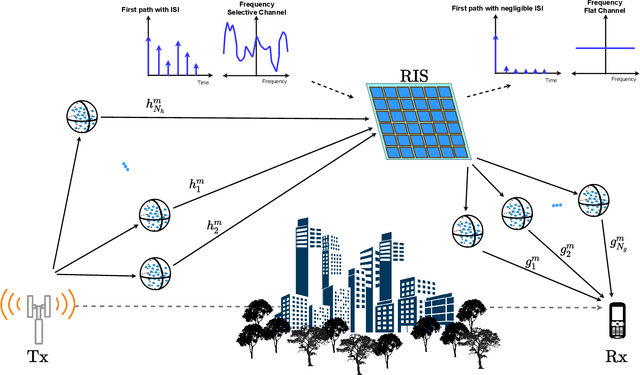
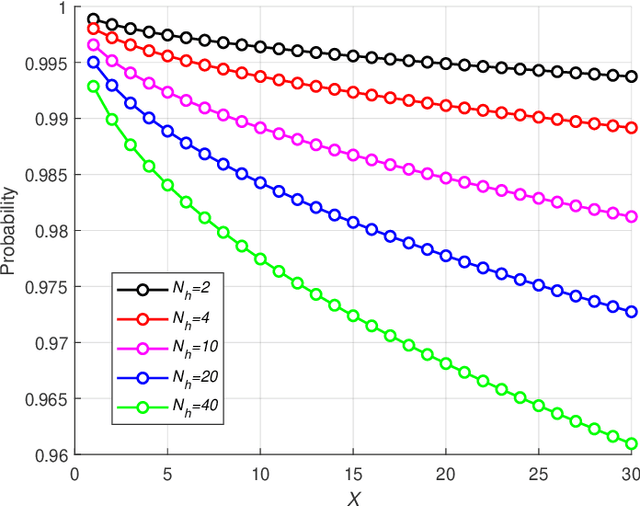
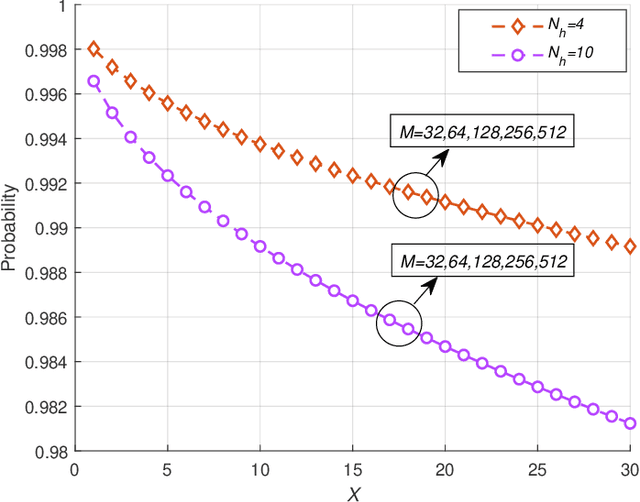
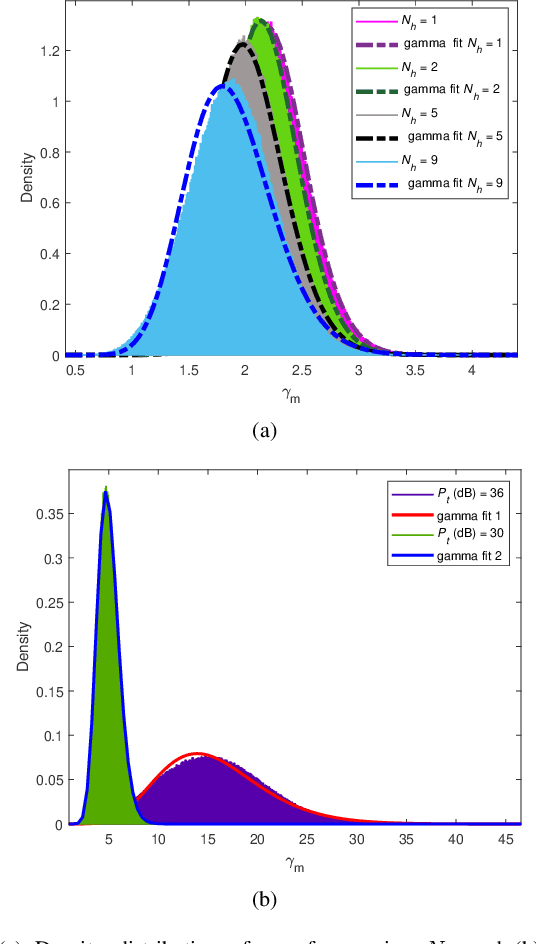
Abstract:Reconfigurable intelligent surface (RIS)-empowered communications is on the rise and is a promising technology envisioned to aid in 6G and beyond wireless communication networks. RISs can manipulate impinging waves through their electromagnetic elements enabling some sort of a control over the wireless channel. In this paper, the potential of RIS technology is explored to perform equalization over-the-air for frequency-selective channels whereas, equalization is generally conducted at either the transmitter or receiver in conventional communication systems. Specifically, with the aid of an RIS, the frequency-selective channel from the transmitter to the RIS is transformed to a frequency-flat channel through elimination of inter-symbol interference (ISI) components at the receiver. ISI is eliminated by adjusting the phases of impinging signals particularly to maximize the incoming signal of the strongest tap. First, a general end-to-end system model is provided and a continuous to discrete-time signal model is presented. Subsequently, a probabilistic analysis for the elimination of ISI terms is conducted and reinforced with computer simulations. Furthermore, a theoretical error probability analysis is performed along with computer simulations. It is demonstrated that with the proposed method, ISI can successfully be eliminated and the RIS-aided communication channel can be converted from frequency-selective to frequency-flat.
Hybrid RIS-Empowered Reflection and Decode-and-Forward Relaying for Coverage Extension
Dec 22, 2020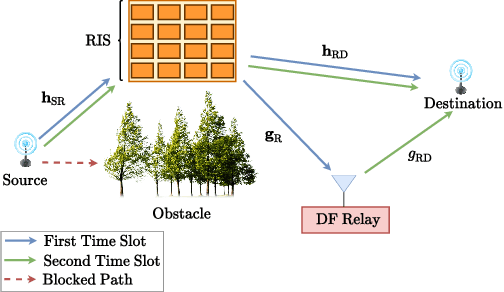
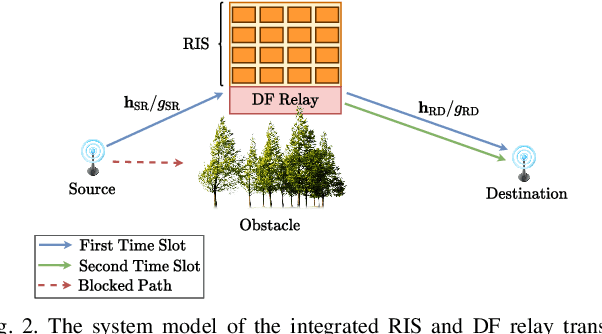
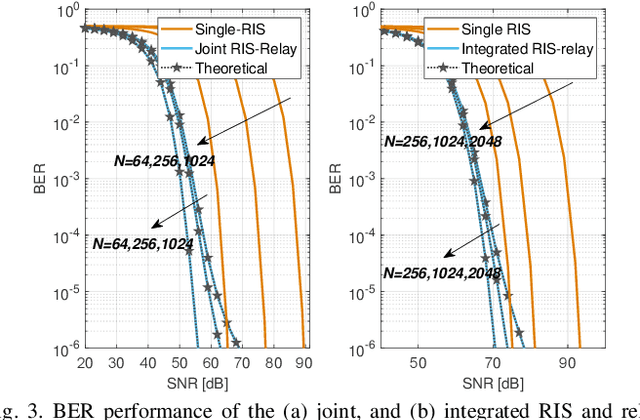
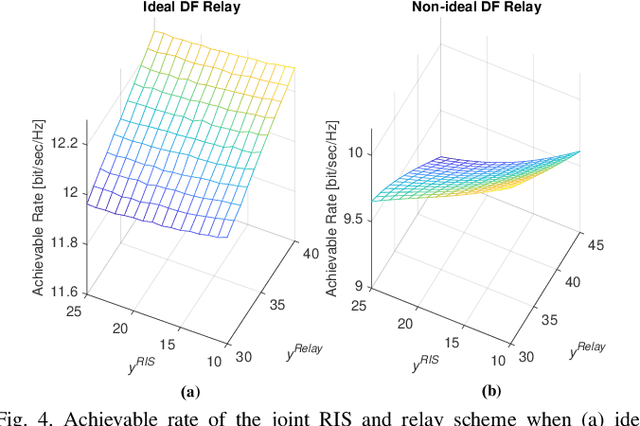
Abstract:In this letter, we introduce two hybrid transmission schemes combining a passive reconfigurable intelligent surface (RIS) with decode-and-forward relaying in a synergistic manner. The proposed schemes offer a flexible as well as cost- and power-efficient solution for coverage extension in future generation wireless networks. We present closed-form expressions for the end-to-end signal-to-noise ratio of both schemes and a sequential optimization algorithm for the power allocation and the RIS phase configurations. Our computer simulations and theoretical analysis demonstrate that the RIS and relaying technologies enhance the achievable rate and error performance remarkably when working complementary to each other, rather than being considered as competing technologies.
 Add to Chrome
Add to Chrome Add to Firefox
Add to Firefox Add to Edge
Add to Edge